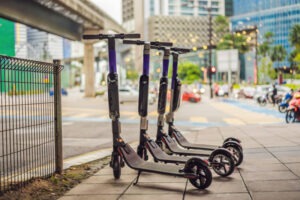
Only under 2% of these swallowing episodes lead to ruptures and intestinal blockages where emergency services are necessary. Up to 20% of these swallowed items could require a doctor’s intervention. Though the risks are relatively low in many circumstances, the dangers increase when the swallowed object happens to be a magnet.
A magnet’s journey through the digestive tract is not always straightforward. When more than one is swallowed, magnets can be pulled toward one another through the lining of the stomach and intestines. This attraction between them can disrupt blood flow and create punctures in the lining of critical organs.
High-Powered Magnet Ingestion
While swallowing any magnet can be dangerous, safety experts are most concerned about high-powered, rare earth magnets. These magnets can be tiny but can have up to 30 times the power of a regular refrigerator magnet.
Rare earth magnets first came to market during the 1980s. It was not until the 2000s that they were popularized under various brand names in both children’s toys and desktop office toys for adults.
According to the Consumer Product Safety Commission (CPSC), small high-powered magnets can kill children when two or more are swallowed if they attract one another through the intestine walls. The magnets get trapped in place and this can cause holes, twisting, or blockage in the intestines.
Accidental Swallowing of Magnets
The strength and unique properties of high powered magnets are often too much fun for children to resist. Dominic Harwell, a 9-year-old student, brought some of these magnets to school to entertain his friends. When Harwell placed them in his mouth to mimic a lip piercing, the magnets clamped together and he accidentally swallowed them.
A school nurse intervened, and Harwell was cleared after running some medical tests. The magnets passed through his system safely, but not all children are as lucky.
Magnets as a Physical Hazard
Buckyballs, a desktop toy designed for office workers, put a 3-year-old girl in harm’s way. They are only five millimeters in diameter, less than a third of the diameter of a dime. Popular demos reveal that despite their size, it only takes a few Buckyballs to support the weight of a half-pound wrench. The little girl swallowed a total of 37.
She appeared to be ill. Her family thought she had the stomach flu. When they took her to a doctor, an x-ray revealed a circular chain of magnets in her stomach. The magnetic balls snapped her intestines together. The magnets ripped three holes in her lower intestine and a single hole in her stomach.
The Consumer Product Safety Commission had taken measures to prevent such incidents. However, their ban on Buckyballs was overturned, opening the possibility for more accidents and possible deaths.
Invasive Surgery Needed to Remove Magnet Blockage
Another incident involved an 8-year-old girl who came to the Seattle Children’s Hospital complaining of a week-long stomach ache. When an x-ray showed multiple magnets and batteries, her doctors tried to use a scope to remove the objects but managed only to retrieve a few of the items she ingested.
Subsequently, they had to resort to more invasive treatment. The doctors performed surgery to remove the magnets and batteries and were left with no choice but to remove close to 10 centimeters of her intestines as well.
Opening up the bowels during surgery creates the possibility of lifelong bowel obstruction due to adhesions. However, the risk can be necessary when dangerous magnets are inflicting serious damage.
A foreign object like a magnet, when trapped in the body, can foster an environment for harmful bacteria to thrive. The consequences can range from infections that are easy to treat with antibiotics to sepsis, a potentially fatal response to infection. Children generally have weaker immune systems than adults, so they are especially vulnerable to infections of any kind.
High-power magnets can entice older children too. A 14-year-old Floridian had to undergo surgery after mistakenly swallowing rare earth magnets she had stored in her mouth while at school. To remove the magnets, her doctors had to cut her small intestine, appendix, and colon.
Expect More, Receive More: Legal Support That Feels Like Family
Symptoms of Magnet Ingestion in Children
The symptoms of magnet ingestion are abdominal pain, fever, nausea, and vomiting. Since these are common symptoms of many illnesses children experience, magnet ingestion is often difficult to immediately diagnose. Since it’s easy to misdiagnose, parents may administer improper treatment at home, causing further damage.
Treatment for Swallowing Magnets
Like any object a child may swallow, a magnet can also be a choking hazard. There are many ways to rescue a child from choking depending on the child’s age and state of consciousness.
If you know for certain that your child has swallowed one or more magnets, do not wait for it to pass or for symptoms to arise. Seek immediate medical attention.
If your child is experiencing abdominal pain, fever, nausea, or vomiting, and you know there is access to magnets in your household, ask whether he or she has swallowed any. Children may lie if they think they could be in trouble. Therefore, it’s important to ask calmly and reassuringly and to repeat the question if necessary.
The treatment for swallowing magnets will differ based on the size, shape, and the number of magnets swallowed. The doctor will generally order x-rays to determine the extent of the problem and how to proceed further.
The treatment will range from observation while waiting for the magnets to pass through bowel movements to removing the object either by scope or surgery. Your child may be required to take a course of antibiotics if signs of infection are seen.
Magnet Safety
As with any potentially hazardous item, prevention is the best solution. The Consumer Product Safety Commission recommends keeping all magnets out of the reach of smaller children and babies. Look out for loose magnetic pieces in your office and children’s play areas. Regularly inspecting your living space for missing magnets could stop a medical emergency from happening.
As a parent, it may help to familiarize yourself with common high-power magnet toys and brands. That way you can immediately recognize them if they enter your house. You can also research the Consumer Product Safety Commission’s website to make sure your children’s current magnetic toys have never been recalled.
You may decide to avoid having these magnets in your home altogether. Alternatively, you may choose to educate your older children about the dangers of high-power magnets. Additionally, be sure to closely monitor all children’s use of toys that include them.
If your child swallows a magnet, provide your doctor as many details as possible, especially if there is a chance that more than one magnet was ingested. Multiple objects in x-rays may appear as a single entity when they are, in fact, various magnetic pieces separated by strained intestinal walls.
When to Hire an Attorney
If you or your child is injured due to a magnet or other product swallowed, you may have a case for product liability. Connect with an experienced personal injury attorney to review the details of your situation. The attorneys of Viles & Beckman have years of experience representing victims of personal injury to receive the compensation they need to recover. You can meet with our staff for a no-cost, no-obligation consultation. Contact us today online or at (239) 334-3933.
About the Author of this Page: The above information was written or reviewed by one of the attorneys at Viles & Beckman LLC who have a combined experience of nearly 60 years: Marcus Viles, Michael Beckman. The information provided in this article comes from years of experience trying legal cases outside and inside courtrooms throughout Florida along with extensive research.






